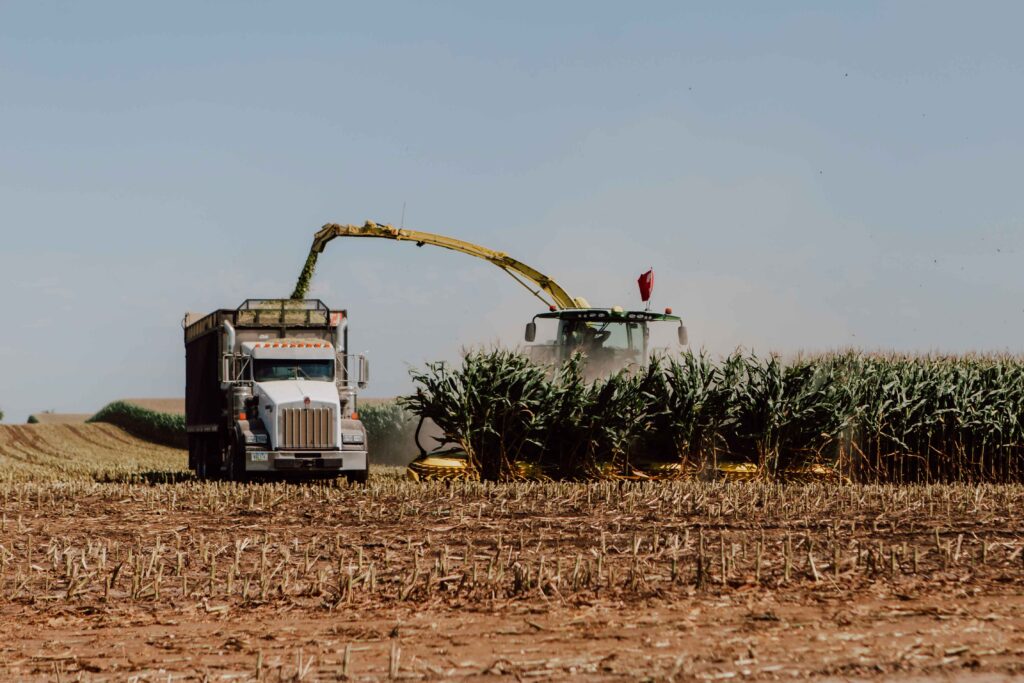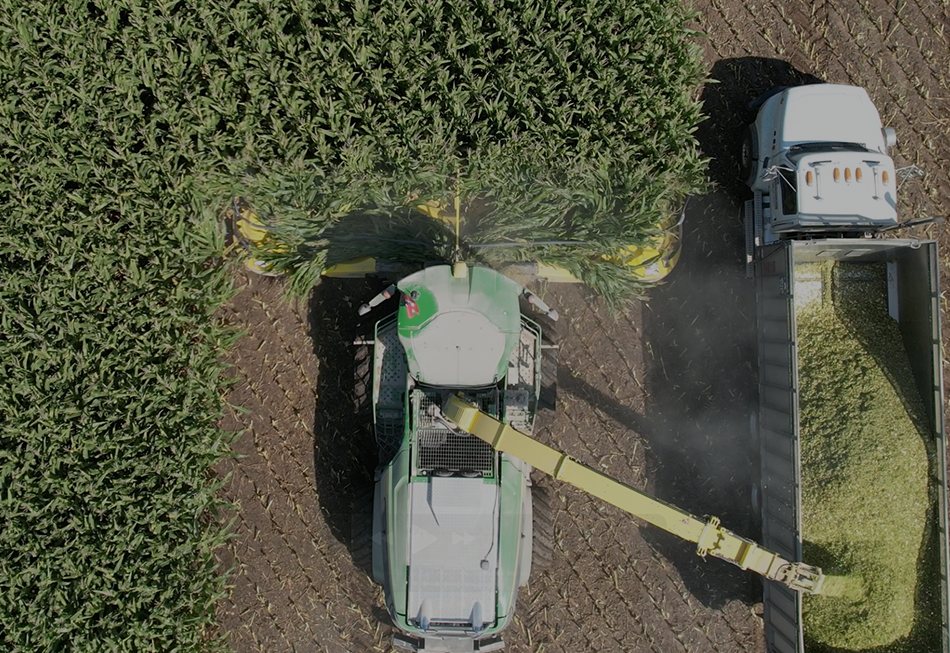Written by: Catey Fischer, BS

Optimizing silage starts with mastering the fundamentals. This article outlines five science-backed strategies to preserve feed quality, improve digestibility, and reduce spoilage. Apply these principles to elevate your harvest and protect your bottom line.
Do you have what it takes to be considered a Silage Savant? The Corn Silage Connoisseur? A Pile Prodigy? Perfect these give principles, and you are well on your way to silage supremacy.
#1 Choppers Roll with Moisture Goal
One of the most critical factors for ensuring optimal fermentation is moisture content. Adequate levels of moisture enable greater packing densities, creating the anaerobic environment needed for lactic acid bacteria to “do their thing”.
When whole-plant moisture content reaches 65 – 70% (30 – 35% DM), it is time to get the choppers rolling. Kernel milkline can also signal harvest conditions that will support starch digestibility but should not be used as the sole indicator; around 50% milkline should be the trigger to sample and chip whole corn plants for dry down.
Remember, under dry conditions in late Summer, corn can lose up to 1% unit per day of moisture and up to 2 – 3% units can be lost during the normal process of fermentation. Once below the 70% whole-plant moisture mark, time is of the essence!

Whole-plant corn is harvested at optimal moisture (65–70%) and chopped directly into transport trucks, which deliver the fresh material to the silage pad where push tractors spread it in thin layers for uniform packing and effective fermentation.
#2 Length of Chop for Distinct Crop
Length of chop can facilitate (or hinder) adequate packing density and should be closely monitored as the crop is brought in from the field. In addition, chop length will have implications to the particle length of the ration, which in turn affects eating time and passage rate.
The chopper should be set to a theoretical length of chop of ⅝″ to ⅞″ under target whole-plant moisture conditions, or ⅜″ to ½″ when dry (<60%). When corn is drier and more mature, it accumulates undigestible fiber (uNDF240) and longer feed particles containing uNDF240 inhibit dry matter intake. When using a bagger or blower, take into consideration the additional processing that can take place on your length of chop and check your final product periodically.
A Penn State Particle Separator can be used to monitor chop length and particle distribution. For finer chops, look for a minimum of 3% on the top screen. For lengthier chops, you should have no more than 18% on the top. The bottom pan should be minimized (<10%), and we should see the majority of particles on the second (8mm) screen (>50%).
#3 Kernel Check is Within Spec
In order to maximize the nutritive value of the starch in your silage, kernels must be processed. When kernels are pulverized by a kernel processor, the surface area for silage bacteria to attach to the protein (prolamin) surrounding the starch molecules increases; the bacteria breakdown the prolamin during fermentation, providing increased access to rumen microbes for digestion.
A 32 oz cup full of silage should contain no more than two, >½ size kernels. If whole kernels are found, the roll gap must be tightened on the kernel processor. This can be a tough ask of the chopper operator as it causes them to slow down, but it is well worth it in the value of increased starch digestibility and the milk it eventually translates to.
#4 Packing Tractor Tonnage Factor
The job of the packing tractor operator is vital, and the weight of their machine needed is dependent upon the speed at which fresh silage is delivered.
Assuming no more than 6″ layers are being spread on the pile, the tractor weight needed is 800 lbs per ton of silage chopped per hour. For example, imagine we received 4, 15 ton truckloads in one hour: 60 tons/hr * 800 lbs / 2000 = 24 tons of tractor weight needed on the pile. For reference, this is the equivalent of a John Deere 9510R with a dozer blade.
If more weight is need, fluid may be added to the tires, or more weight applied directly to the tractor (ballast blocks). For large chopping operations, multiple packing tractors are often needed.
#5 Prompt, Fantastic Silage Plastic
The final stage in silage chopping is to cover the bunker or pile with a quality silage tarp. Not only does the silage tarp protect the silage from the elements and pests, but it limits oxygen exposure to the top layers of the feed. Ample weight, in the form of tires or sandbags, must be used to secure the tarp and prevent any pockets where oxygen could enter.
Silage tarp should be greater than 6 mil, and at least one tire per 9 ft2 should be used to secure it in place. The use of an oxygen barrier under the tarp may also reduce spoilage in the first few feet of silage where packing is not as dense. Additionally, consider using bailing twine or zip ties to secure the tires to each other in a “grid” fashion – this will help prevent tires from sliding off the pile and maintain even distribution on the tarp.
KEY TAKEAWAYS:
- Harvest corn silage at 65–70% moisture to ensure optimal fermentation and minimize dry matter loss.
- Adjust chop length based on moisture to promote proper packing and maintain feed quality.
- Ensure effective kernel processing to improve starch digestibility and maximize feed value.
- Use adequate packing tractor weight (800 lbs/ton/hr) to achieve dense, oxygen-free silage.
- Cover piles promptly with durable plastic and proper weighting to protect feed and reduce spoilage.
Standard Dairy Consultants can help.
We understand you measure our value by the results our people deliver. Our experienced team knows how to apply their knowledge to your specific operation in ways that directly impact your efficiency and performance and, ultimately, your profitability. The only way to be good at what we do is to develop a good working relationship with you. We’re regular fixtures at your farm as we get to know you, your people and your herd.


